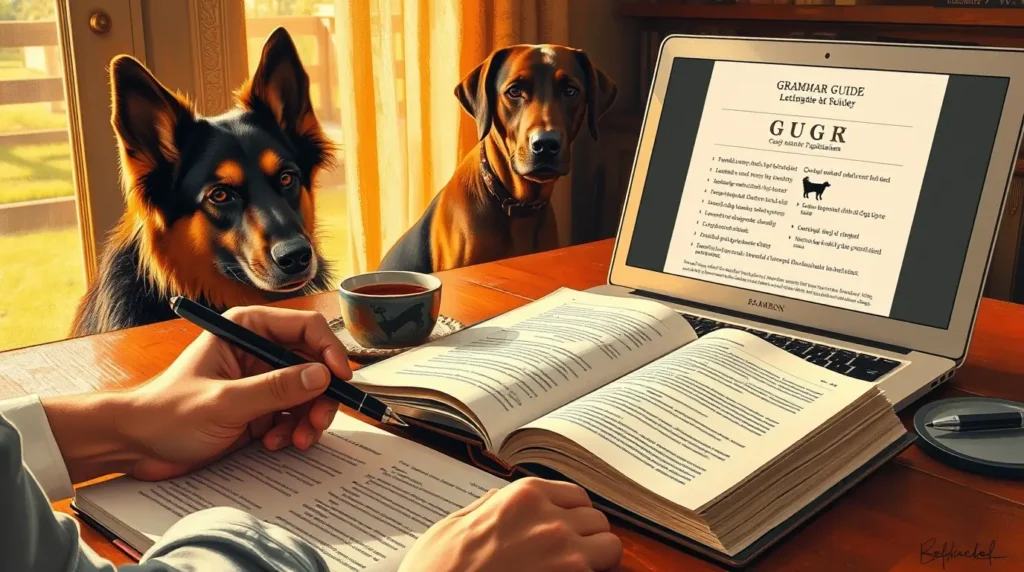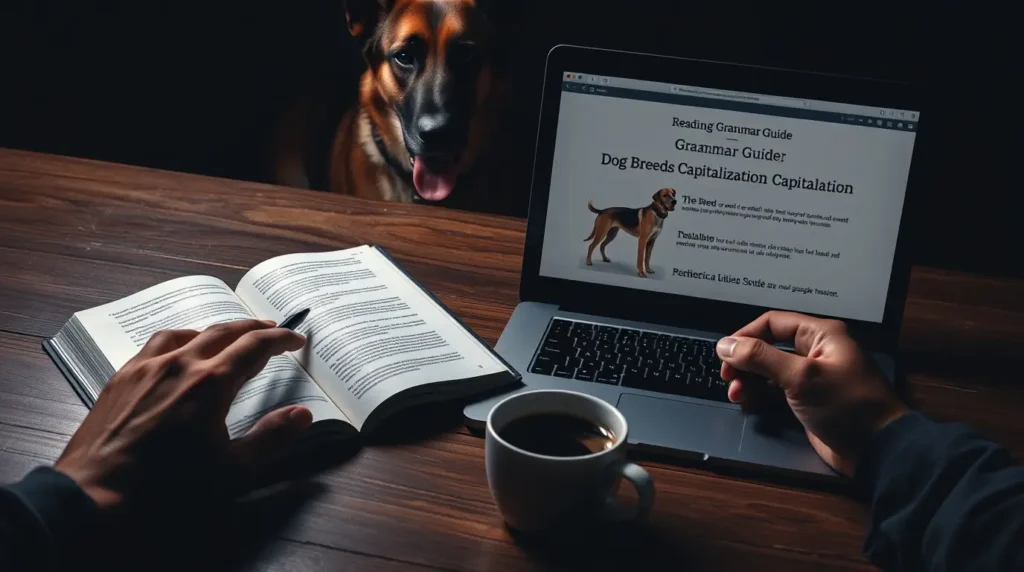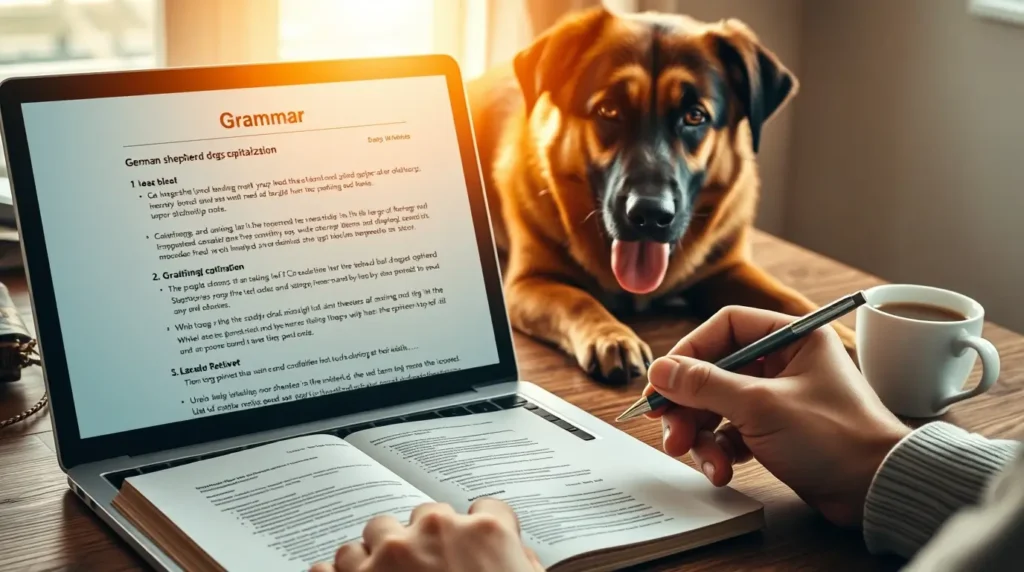Understanding Dog Breed Capitalization Rules
WhizPet conducted extensive research to help pet owners, writers, and dog enthusiasts understand the often confusing rules surrounding dog breed capitalization. Many people wonder, are dog breeds capitalized in different writing styles? If you’ve ever been unsure whether to write “German shepherd” or “German Shepherd,” you’re not alone. Are dog breeds capitalized according to AP Style, or does the Chicago Manual of Style follow a different approach? To clear up these doubts, our team examined various style guides and industry best practices to provide you with a comprehensive answer.
Through our research, we analyzed grammar rules, consulted expert linguists, and reviewed published works to determine when and where dog breed names should be capitalized. The confusion arises because different style guides have varying rules. Some capitalize only proper nouns, while others capitalize the full breed name. By breaking down these guidelines, this blog will help you correctly apply capitalization rules. Keep reading to finally get a clear answer to are dog breeds capitalized and avoid common mistakes when writing about your favorite breeds.
Are Dog Breeds Capitalized in Writing?
Dog breed capitalization can be tricky because different writing styles have different rules. However, a simple way to remember is:
- Capitalize breed names that include a proper noun, such as “German Shepherd” or “Labrador Retriever.”
- Do not use capital letters for common nouns like “poodle” or “beagle.”
The confusion mainly arises because different style guides like AP Style and the Chicago Manual of Style follow separate rules. If you’re a pet writer, a dog lover, or simply someone who wants to write correctly, knowing the right way to capitalize dog breeds can enhance your writing’s credibility and professionalism. Misuse of capitalization may lead to inconsistencies and lower the quality of your content.
For example, some people mistakenly capitalize all breed names, while others keep everything lowercase, which is incorrect according to style guides. Understanding the specific rules for AP and CMOS styles will help you write correctly across different platforms. Let’s explore their guidelines so you can avoid common mistakes and improve your grammar skills when discussing your favorite dog breeds.

Are Dog Breeds Capitalized AP Style?
According to AP Style (Associated Press Stylebook):
- Only capitalize the proper noun part of the breed name while keeping the generic noun lowercase.
- Examples:
- German shepherd
- Labrador retriever
- Yorkshire terrier
- dachshund
- schnauzer
This approach prioritizes simplicity and consistency, ensuring that words like “shepherd” and “retriever” remain lowercase. AP Style is commonly used in journalistic writing, newspapers, and media publications. Following this rule keeps writing clear and avoids unnecessary capitalization, which can make text look cluttered.
For instance, “German Shepherd” may seem correct to some, but in AP Style, “shepherd” is treated as a general noun, just like “dog” or “cat.” This style guide focuses on readability, so even widely recognized breeds like “golden retriever” and “bulldog” remain lowercase unless they contain a proper noun. By sticking to AP Style, writers maintain consistency across articles, blogs, and news stories.
If you’re writing for online publications, sticking to AP Style ensures clarity and professionalism. Remember to always cross-check breed names in the official AP Stylebook to avoid errors. Consistency in capitalization helps establish authority and credibility in your writing.
Are Dog Breeds Capitalized Chicago Manual of Style?
The Chicago Manual of Style (CMOS) follows a different approach:
- Capitalize the entire breed name if it includes a proper noun.
- Examples:
- German Shepherd
- Labrador Retriever
- Yorkshire Terrier
- Dachshund
- Schnauzer
Unlike AP Style, CMOS treats breed names as formal terms, meaning that both the proper noun and the associated noun are capitalized together. This approach is often used in academic, literary, and formal writing, where capitalization emphasizes the breed’s distinct identity.
For instance, under CMOS guidelines, “Labrador Retriever” is fully capitalized, recognizing “Retriever” as part of the breed’s official name. This makes CMOS an ideal choice for books, research papers, and documents that require a more traditional and structured presentation.
While CMOS is widely used in professional publishing, it’s important to remain consistent with the style guide you’re following. If you’re writing for a publication that adheres to CMOS, ensure all breed names containing proper nouns are fully capitalized to maintain accuracy and readability.
10 Common Mistakes in Dog Breed Capitalization
Many writers unknowingly make mistakes when capitalizing dog breeds. Below are some of the most common errors:
- Incorrect: german shepherd | Correct: German shepherd (AP) or German Shepherd (CMOS)
- Incorrect: Labrador Retriever (AP) | Correct: Labrador retriever
- Incorrect: dachshund | Correct: Dachshund (CMOS)
- Incorrect: schnauzer | Correct: Schnauzer (CMOS)
- Incorrect: Golden Retriever | Correct: Golden retriever (AP)
- Incorrect: yorkshire terrier | Correct: Yorkshire terrier (AP) or Yorkshire Terrier (CMOS)
- Incorrect: beagle | Correct: beagle (Both AP & CMOS)
- Incorrect: Chihuahua dog | Correct: Chihuahua (Both AP & CMOS)
- Incorrect: Boxer dog | Correct: Boxer (Both AP & CMOS)
- Incorrect: Saint Bernard | Correct: Saint Bernard (Both AP & CMOS)
Avoiding these mistakes will ensure your writing remains accurate and professional.

When Should Dog Breeds Be Capitalized in Different Contexts?
1. In Scientific Writing
Scientific and veterinary texts typically write dog breed names in lowercase unless they contain a proper noun. This aligns with taxonomic classification rules.
2. In Legal Documents
Some legal documents may require breed names to be capitalized, especially when referring to registered breeds in official records.
3. In Casual Writing and Blogs
For blog posts, articles, and social media, consistency is key. Writers should stick to a single style guide—AP or CMOS—to maintain professionalism.
FAQs About Dog Breed Capitalization
1. Is “Dachshund” Capitalized?
- Yes, if following CMOS.
- No, if following AP Style (“dachshund”).
2. Is “Labrador Retriever” Capitalized?
- AP Style: Labrador retriever
- CMOS: Labrador Retriever
3. Is “Schnauzer” Capitalized?
- Yes, in CMOS.
- No, in AP Style (“schnauzer”).
4. Is “German Shepherd” Capitalized?
- AP Style: German shepherd
- CMOS: German Shepherd
5. Are Dog Breeds Capitalized in Titles?
Yes! In the title case, breed names are capitalized according to standard headline rules. For example: “10 Facts About German Shepherds”
Conclusion & Call to Action
Understanding when to capitalize dog breeds is essential for clear and professional writing. AP Style only capitalizes proper nouns within breed names, while CMOS capitalizes the entire breed name when a proper noun is present. By following these guidelines, you can ensure your writing is accurate and polished.
If you’re a writer, blogger, or pet enthusiast, mastering these rules will make your content more credible.
Need more writing tips? Subscribe to our newsletter for expert grammar guides and style updates!
Related blog: For more detailed information about pet care

